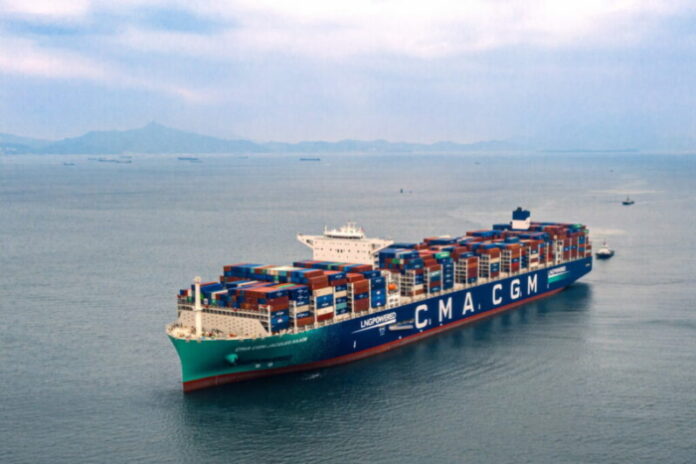
-
More blank sailings and service suspensions expected as carriers try to halt a slide in ocean cargo rates triggered by increased vessel supply and slow demand
-
Drewry expects the period of “managed decline” to allow carriers to find out how much of their US$400 billion profits from Q2 2020 to Q2 2022 the carriers will keep
-
The supply-demand balance will be key to rate stability in the months to come, says DHL
Container lines are expected to use more blank sailings and service suspensions to stabilize ocean cargo rates’ drift to wieldy levels as capacity supply grows and demand slows in some key import markets during this year’s muted peak season, DHL reports.
Blank sailings began even before the Golden Week in early October, when China’s factories close, but huge amounts of new capacity joining the ocean fleet from 2023 have not slowed the spot price drop on the Asia-US transpacific corridor.
DHL’s Ocean Freight Market Update on October 17 says many are wondering where the rate floor will be and reports suggest carriers are aggressively seeking cargo and preparing to lay ships up.
The report noted the capacity demand-supply balance has improved, but the blanked sailings by carriers in early October could be a sign of more service cuts to come.
“We’ve seen an easing of port congestion, although labor strikes at ports in the UK are causing some disruption and we’re still seeing vessel queues on the US East Coast which [have] offset improvements at US West Coast ports,” said Kelvin Leung, chief executive of DHL Global Forwarding Asia Pacific.
China’s dynamic zero Covid-19 policy has impacted major manufacturing and exporting centers like Chengdu, Dalian, Guangzhou, Shenzhen and Tianjin.
Shipping analyst firm Drewry expects the current period of “managed decline” to determine how much of the US$400 billion profits from Q2 2020 to Q2 2022 the carriers will keep, DHL noted.
“Lines face an enormous challenge taming the one thing they have control over – supply. The problem is – there is a lot of it, and they are being attacked on multiple fronts,” the report quoted Drewry.
Sea-Intelligence estimates 50% of the global port congestion in January had been cleared by August, easing capacity shortages and pulling down spot rates.
Meanwhile, 7.1 million TEUs of newbuildings ordered in the last two years are due for delivery in 2023-2024, deepening supply worries. This has lifted the global orderbook-to-fleet ratio to under 30% by late September, from about 9% two years ago, said Alphaliner.
The demand outlook continues to dim on war risk, skyrocketing energy costs, political instability and general inflation that are impacting overall consumer spending and trade volumes. S&P Global’s Eurozone Manufacturing PMI fell to 48.4 in September from 49.6 in August, signalling a further worsening of operating conditions for euro area producers.
While the US economic picture is far brighter than in Europe, its import growth “has run out of steam, especially for cargo from Asia” and capacity cuts by carriers reflect falling consumer demand for merchandise, said Hackett Associates.
Drewry has lowered its global container handling demand outlook for 2022 to 1.5%, and 2023 to 1.9% following heavily downgraded GDP predictions, the DHL report said.
Drewry cites spot freight rates staying highly profitable for carriers despite months of declines, adding liners would not sit idly as rates slide. It said ship deliveries would be pushed back, unprofitable ships offloaded or scrapped, and multiple services suspended.
“Assuming carriers do exactly as we expect, those combined actions will still be insufficient to fully bridge the supply-demand gap next year, with an estimated net increase in effective capacity of 11.3% way above the projected demand growth of 1.9%,” reported Drewry.
“Adding in missed sailings will, however, get them closer and should be enough to keep freight rates and profits above 2019 levels.”
The more favorable supply-demand balance for customers is finally prompting improvements in service reliability, with global schedule reliability climbing 5.8 percentage points in August from July and the average delay for vessel arrivals falling sharply, Sea-Intelligence said.
“Global supply chains still face a lot of disruption, but we’re seeing service levels from carriers improve as congestion eases and more capacity is freed up, and we expect this trend to continue. However, the supply-demand balance will be key to rates stability in the months to come,” said Dominique von Orelli, global head of Ocean Freight, DHL Global Forwarding.




